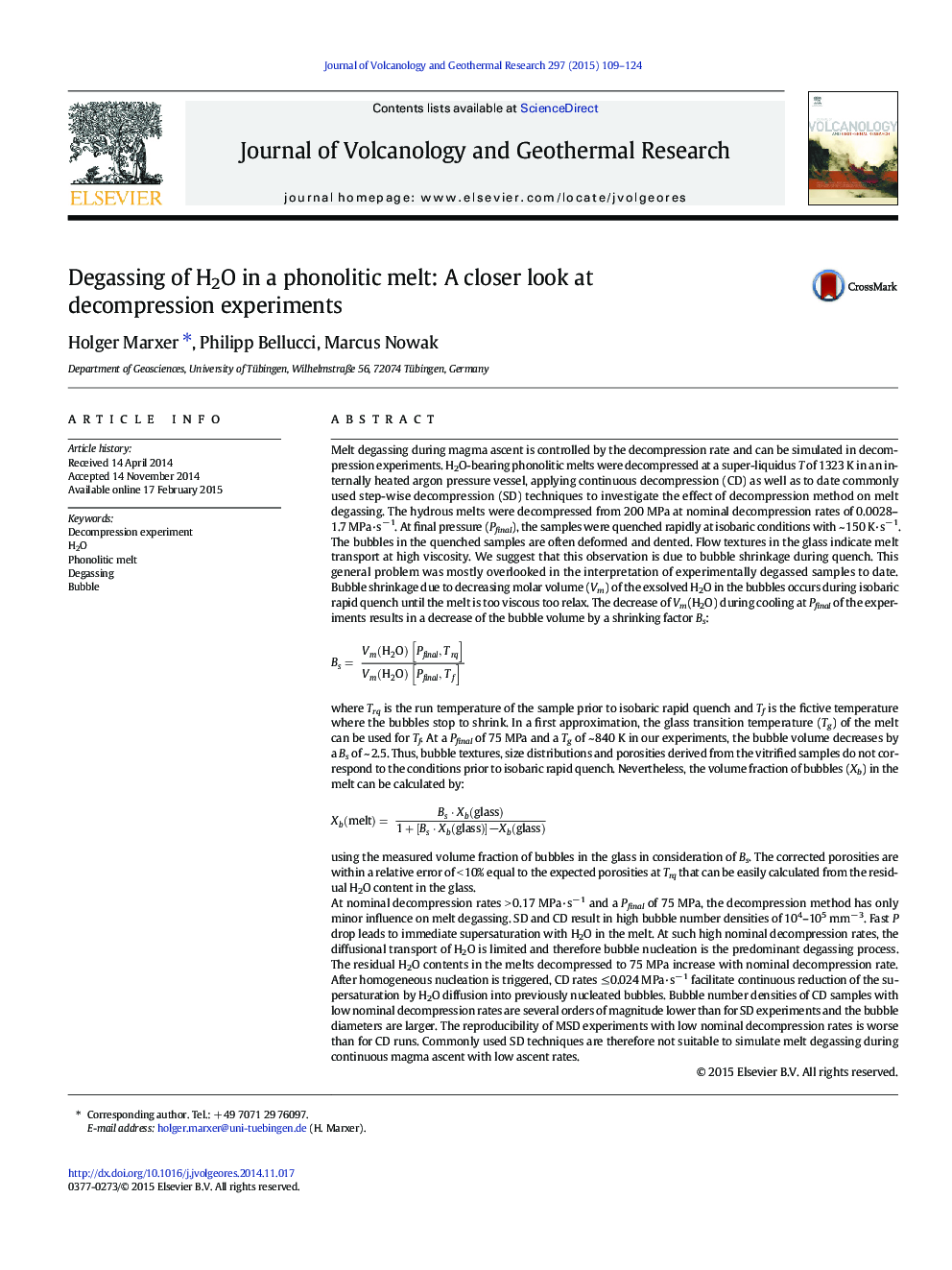| Article ID | Journal | Published Year | Pages | File Type |
|---|---|---|---|---|
| 4714453 | Journal of Volcanology and Geothermal Research | 2015 | 16 Pages |
Abstract
At nominal decompression rates > 0.17 MPa·sâ 1 and a Pfinal of 75 MPa, the decompression method has only minor influence on melt degassing. SD and CD result in high bubble number densities of 104-105 mmâ 3. Fast P drop leads to immediate supersaturation with H2O in the melt. At such high nominal decompression rates, the diffusional transport of H2O is limited and therefore bubble nucleation is the predominant degassing process. The residual H2O contents in the melts decompressed to 75 MPa increase with nominal decompression rate. After homogeneous nucleation is triggered, CD rates â¤Â 0.024 MPa·sâ 1 facilitate continuous reduction of the supersaturation by H2O diffusion into previously nucleated bubbles. Bubble number densities of CD samples with low nominal decompression rates are several orders of magnitude lower than for SD experiments and the bubble diameters are larger. The reproducibility of MSD experiments with low nominal decompression rates is worse than for CD runs. Commonly used SD techniques are therefore not suitable to simulate melt degassing during continuous magma ascent with low ascent rates.
Related Topics
Physical Sciences and Engineering
Earth and Planetary Sciences
Geochemistry and Petrology
Authors
Holger Marxer, Philipp Bellucci, Marcus Nowak,
